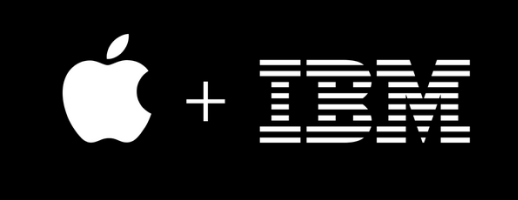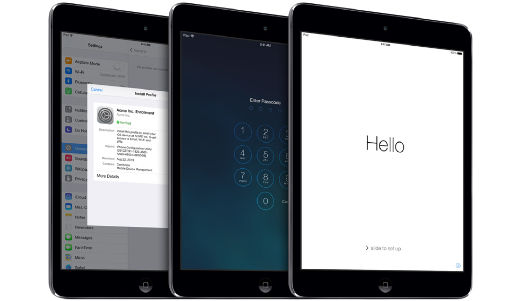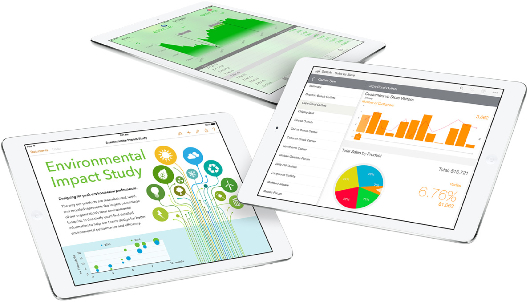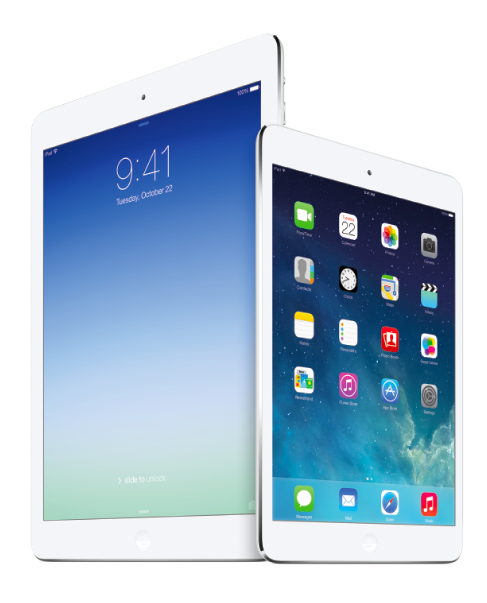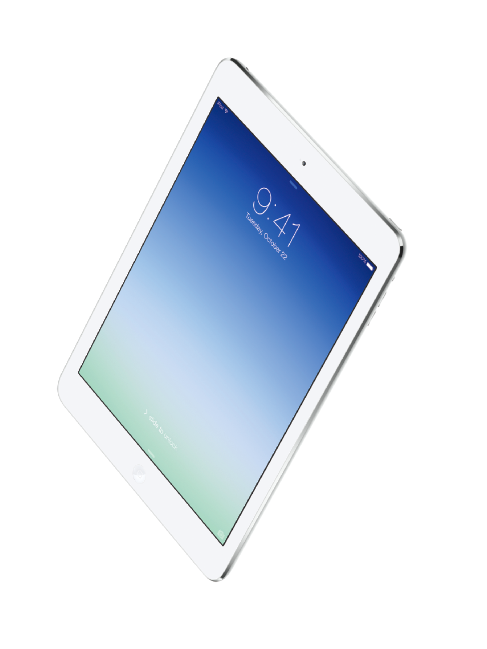With The Apple/IBM Alliance, Is The iPad Now Truly Professional Grade? – The ‘Book Mystique
Almost since the iPad was rolled out in 2010, and especially after Apple made a 128 GB storage configuration available in 2012, there’s been debate over whether the iPad is a serious tool for business and content creator users.
Over the past couple of years, Microsoft has pitched its Johnny-come-lately Surface Pro tablet PCs, which run the desktop Windows operating system, as a superior solution to the iPad as a work platform for the enterprise thanks to their supporting a full-featured desktop OS with full multitasking, multiwindowing, and file level directory access, and compatibility with a vast array of Windows software applications, among other things.
Determination by objective observers has up to now been largely equivocal, but that changed last week with the announcement that a historical on-again-off-again partnership between Apple and IBM is back on again with an agreement that will see IBM developing about 100 enterprise focused apps for Apple iOS devices, the latter which will,also be promoted and sold by IBM’s army of sales representatives worldwide.
Nothing says “serious” in corporate IT like the three letters IBM, which stands for International Business Machines. As The Motley Fool’s David Eller, who thinks the Apple/IBM deal is “the Biggest Tech News of 2014,” notes, “IBM has a trusted footprint in virtually every multinational enterprise in one form or another.” And with IBM lending its endorsement and sales advocacy to the iPad and iPhone as enterprise platforms, the point is now pretty much moot. Apple’s devices are now professional grade by default.
One of the beauties of this deal is that Apple and IBM compliment each other very nicely, with very little product or service overlap, making it a win/win for both firms with no rationalization or fudging necessary.
Daily columnist for RealMoney at TheStreet.com and editor for both small cap and turnaround monthly newsletters at Investors Alley ( http://investorsalley.com)Bret Jensen, http://seekingalpha.com/article/2319775-apple-invades-the-enterprise-space?uprof=53&dr=1, suggests that the new partnership could end up “transforming the enterprise market.” Jensen notes that Apple and IBM will develop an enterprise-friendly range of systems for tablets and smartphones, with potential to turn how business gets done within corporate structures on its head, and also to further the BYOD (Bring Your Own Device) movement which has already been accelerating. With IBM now selling Apple iOS devices as part of its corporate offerings, and given the brand names within the partnership, Jensen maintains that the new venture should have no difficulty “getting an audience with any corporate CIO in the country.”
Jensen also observes that the new partnership is evidence that Apple is moving on from the Steve Jobs era, and that this type of deal would have been unthinkable during Jobs’s. tenure as a visionary leader known for his go it alone style, and suggesting that this alliance with IBM might be just the first of many such collaborative efforts.
Some are more skeptical. Piper Jaffray analyst and veteran Apple-watcher Gene Munster commented that in terms of benefit to Apple, he doesn’t expect the partnership with IBM will have measurable impact on the professional iDevice model “given that Apple has already achieved 98% iOS penetration with Fortune 500 companies and 92% penetration with Global 500 companies,” and that it will not likely “be the make or break factor for a large corporation in utilizing iOS.” However, those sector penetration figures are otherwise undefined, and could mean anything from a few BYOD iPhones and iPads in corporate executive offices, or company-wide deployment of thousands of machines.
Munster calculates that that if half of the Fortune 500 were to each purchase as a result of the IBM deal, an incremental 2,000 iPhones and 1,000 iPads over and above hardware they had been planning to purchase anyway, it would add about a half a percent to Apple’s CY15 revenue.
Munster deduces that that because so many business people already use iPhones and iPads as work tools, Apple won’t realize many incremental sales from its new IBM alliance.
I’m not nearly so pessimistic, and find it difficult to imagine how having IBM’s army of more than 100,000 sales representatives and consultants out there promoting iPads and iPhones won’t yield substantially increased sales volumes of both devices.
With IBM selling Apple products and supporting them with business software, it will introduce iPhones and iPads, from which already derives nearly three quarters of Apple’s annual $6billion revenues, to hundreds more companies that already buy IT products from IBM, many of which will be persuaded to add more Apple products to their corporate IT hardware deployments.
In light of all that, I’m inclined to agree with Motley Fool’s Eller that this deal probably will be looked back on as the biggest IT story of 2014. It’s potentially huge, and no flash-in-the-pan. As above noted, Apple and IBM share collaborative history, the two-decade experiment with bringing IBM’s RISC technology to the desktop and laptop in the form of PowerPC silicon. IBM Japan helped Apple bring a subcompact Mac laptop replacement for the long-in-the-tooth holdover from 68k days PowerBook Duo to market in 1997 as designer and supplier of the PowerBook 2400c.
Last week Tim Cook told the Wall Street Journal he does 80 percent of his computing work as Apple CEO on his iPad, and he thinks you should too, maintaining “There’s no reason why everyone shouldn’t be like that.”
“Everyone,” might be just a little hyperbolic. As much as I love my iPad, and perhaps even could do 80 percent of my computing on it were I obliged to, I probably average more like 50-60 percent iPad to ’40-50 percent Mac in actual usage, and I don’t expect that to change a whole lot unless and until Apple addresses several issues that handicap the iPad as a production platform. Such as the iOS’s lack of multiwindowed multitasking, of the ability to upload image files to the WordPress posting engine, and of external pointing device support, all of which, incidentally, the Windows and Android competition has.
There seems to be no technical reason why those features can’t be supported by the iOS too, save for Apple’s dogged stubbornness, having evidently decided that they aren’t necessary, or even desirable, in the sense of keeping things simple and idiot-proof. And they may have an arguable point with respect to the iPad as a consumer device, but they’re obviously now trying to flog it as a business and content producer machine, and the onus is on them to give serious work users the tools they need to function efficiently. Until they do, my Macs will remain indispensable, with the iPad languishing the nice-to-have too category.
Another matter that will require some adjustment in order for iOS devices to achieve real traction in the enterprise/productivity space is Apple’s rapid obsolescence policies, and relatively rapid cutting middle-aged hardware and operating system versions adrift as opposed to, say, Microsoft’s commitment to backward compatibility.
Computerworld’s Greg Keizer cites Moor Insights & Strategy principal analyst Patrick Moorhead observing that enterprises demand longer hardware lifecycles than many consumers do, so it will be crucial for IBM and Apple to pledge longer-term support for the hardware, and for iOS, than has historically been the case. Keizer quotes Moorhead noting that “This could be really, really interesting. Microsoft’s burden has always been its backwards compatibility, but now as Apple rolls forward it will have to support legacy hardware and older versions of iOS, too.”
If he’s right, it will of course benefit individual users who tend to keep their hardware a long time. For example. I drafted this column mostly on my three+ year old iPad 2, and am currently editing it on my late-2008 Core 2 Duo unibody MacBook, which I understand will be able to run iOS 8 and OS X 10.10 Yosemite respectively, but are at the bottom-tier of supported hardware for both new operating systems. I expect that iOS 9 will likely continue support for A5 powered devices (iPhone 4S, iPad 2, original iPad mini) because the original mini is still being sold new, but the cutoff for OS X 10.11 may be shifted forward to minimum Core-i CPUs.
Whatever, you can expect increased emphasis and focus on the iPad as an alternative to laptops. Xiaojun Hui and Xie Yil of the (Chinese language) Taiwanese business journal Economic Daily report that according to sources in the upstream supply chain, the “one more thing” to be featured this year at Apple’s fall new product rollout may turn out to be two more things; a third-generation iPad mini, renamed iPad mini Air, served up in an enclosure 30% thinner than the current iPad mini, and accompanied by a new 12.9-inch screen iPad aimed at the commercial market as a laptop alternative, and to better take advantage of Apple’s collaboration with IBM.The report cites ability to display two open application or document windows side-by-side as one of large screen iPad’s marquee features. If that’s accurate, it would mark a major Apple concession to making the iPad a truly professional grade platform.

